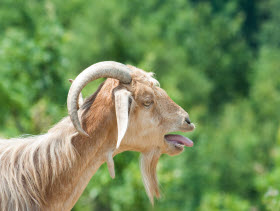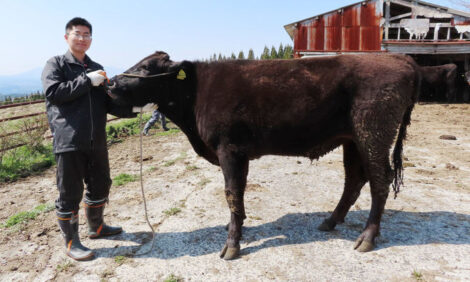



Greek Profitability Rests on Management Success
ANALYSIS - Although widespread weather events are making beef production unprofitable for many European producers, the big issue for many Greek beef farmers is poor management.This winter has been the best for many years across the Greek plains with markets also being helpful for producer margins. Liveweight prices are currently above the EU average with Limousine carcasses fetching values of €4.2-4.3/kg.
This is according to Professor George Valergakis from the Laboratory of Animal Husbandry at the Aristotle University of Thessaloniki. He insists that it is poor management skills, rather than the weather, that are responsible for holding some producer margins back.
“More efficient farmers are getting cattle up to 250-280 kilos in 13-14 months whereas lesser holdings require up to 18 months. This makes a huge difference in terms of profitability when cattle are inside,” adds Professor Valergakis.
He stresses that the import heavy beef herd in Greece needs to be run economically through closer scrutiny in terms of weight gained for forage digested.
“If my farm has a daily weight gain of 1.4 kg and my neighbour has 1.8 kg average across his herd, then no matter what breed I have I will still see gains of 1.4 kg. This brings the question; Why buy a more expensive Blonde cow if you can’t exploit its potential?”
Larger beef enterprises in Greece fatten Brown Swiss or Blondes crossed with Limousine or Simmental animals. This is done inside and on a concentrate based diet, says Professor Valergakis.
*
“If my farm has a daily weight gain of 1.4 kg and my neighbour has 1.8 kg average across his herd, then no matter what breed I have I will still see gains of 1.4 kg."
Bulls are preferred to steers although regional variation has to be considered when marketing and selling beef in terms or carcass weights.
“The feed situation in Greece is to grow first quality corn grains which are exported abroad while importing second quality grains as forage.” This, he stresses, is why there is so much need for good on-farm efficiency.
Silage is produced although is typically fed to cows and replacement heifers through the winter. This increases beef sector dependence on concentrates.
“We need good efficiency because we do not have grassland for all animals. Most pasture is given to Sheep and Goats. Hill areas have beef cattle that graze but most bulls and some heifers raised for slaughter are housed inside,” he says.
“When inside, a typical finishing diet is 86 per cent concentrate with the rest being made of forage. Wheat straw quantities of 1.5 kg are common with maybe 5 kg of corn silage.”

Sheep and goats take grazing priority - this means beef has evolved as a housed system. This requires great scrutiny of costs and good management, says Professor George Valergakis.
The Greek beef herd fluctuates around 80,000 head, possibly close to 90,000 some years adds Professor Valergakis. This herd is comprised of annual imports of youngstock, primarily from Eastern Europe.
“When it comes to young beef animals, wherever Greek farmers find them, they will buy them,” he says. “Of imported stock around 80 per cent comes from Eastern European nations. This includes countries like Hungary, Romania and the Czech Republic.”
This is a feature of the national Greek beef economy, with around 17,000 youngstock, typically around five months of age, being imported from France which is seen as the premium market.
But Professor Valergakis is telling French cattlemen that to enhance their export potential they have to educate Greek farmers in maximising superior French bloodstock.
“Everyone appreciates French cows are better quality but are much more expensive. In Eastern Europe they are cheaper and typically second or third generation crossed beef breeds,” he says.
Professor Valergakis stresses that ‘You cannot sell expensive cows to low efficiency farmers’. He adds that the French industry should show Greek farmers how to fatten their animals to give them a broader market share of the Greek cattle trade.
One specific problem, perhaps the biggest area for improvement, is increasing weight gain of Holstein crosses. This, he states, is a particular challenge on some units.
“They are making money on these animals but not as much as they could,” says Professor Valergakis. “The problem with these Holstein type cattle is if you don’t feed them early and in the right way, you do not have much chance to put them right.”
This message is being communicated to producer level, although there is no established extension system as such in Greece, he adds.
Meetings and public presentations are often well attended by farmers and this, Professor Valergakis conludes, is where he hopes change can start.
Michael Priestley
News Team - Editor
Mainly production and market stories on ruminants sector. Works closely with sustainability consultants at FAI Farms



